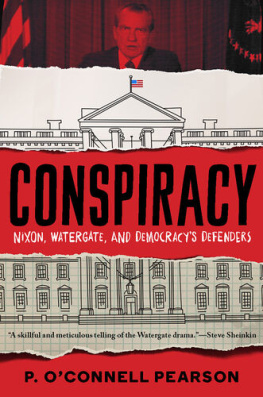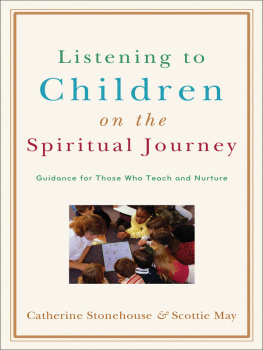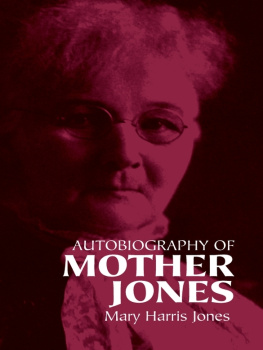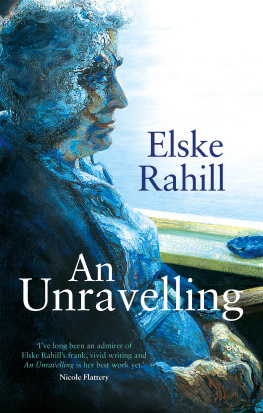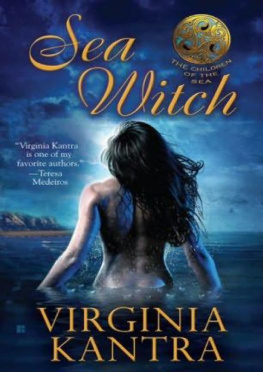University of Virginia Press
2015 by the Rector and Visitors of the University of Virginia
All rights reserved
Printed in the United States of America on acid-free paper
First published 2015
ISBN 978-0-8139-3675-8 (cloth)
ISBN 978-0-8139-3676-8 (e-book)
1 3 5 7 9 8 6 4 2
Library of Congress Cataloging-in-Publication Data
is available from the Library of Congress.
A NATION DIVIDED:
STUDIES IN THE CIVIL WAR ERA
Orville Vernon Burton
and Elizabeth R. Varon
Editors
ACKNOWLEDGMENTS
SITTING SURROUNDED BY shelves full of books that have inspired and challenged me, it feels important to acknowledge that this book would not be possible without building on the work of generations of scholars, most known to me only through print and acknowledged here primarily in the notes. I am also indebted to all those who created and preserved the documents that have afforded me glimpses into the lives of the people who populate the pages that follow. I am grateful for the authors of all the texts that have been my traveling companions over the past decade or so.
This book has been a long time coming and, as a consequence, I have had the pleasure of being part of several communities that have supported it and me along the way. The book began as a dissertation under the direction of Michael P. Johnson and Jane Dailey at Johns Hopkins University. With his uncanny ability to perceive absences and his willingness to pursue inquiries wherever they lead, Mike provides a bracing model of historical practice. I am thankful for having had the opportunity to learn with him and am grateful for his steadfast support, including commenting on the project at every stage from start to finish. It was my great good fortune that my years at Johns Hopkins coincided with Jane Daileys. Her wit, rigor, and insistence on the importance of form as well as analysis improved this project enormously. Dorothy Ross and Ron Walters were ideal guides in the first year of graduate school and stimulating interlocutors throughout. Toby Ditz provided a model of generous scholarly exchange and critique, particularly in the writing workshops she ran for students at various stages of their research and writing. The participants in those workshops, including Katherine Hijar, Caleb McDaniel, Bonnie Miller, and many others, provided invaluable guidance on my own work as well as exciting glimpses of where their own research was heading. I am also grateful to Michael Henderson, Tara Kelly, Jennifer Loux, Nancy Medley, Greg OMalley, and Kyle Planitzer, colleagues I first met in those early, heady seminars and who have continued to encourage and challenge me in the years since. My deep thanks for generous reading and valued friendship go to Erica Burleigh, Cameron Logan, Crystal lHte, Tim Mackin, and Clare Monagle. Their questions and encouragement made this work possible. My particular thanks go to Frances Clarke and Carolyn Eastman whose sharp reading and generous guidance helped me make my way through the maze of academic life.
Numerous organizations provided vital funding to support the research and writing of this book. Fellowships from Johns Hopkins enabled me to focus on research and writing while in graduate school. Andrew W. Mellon Foundation research fellowships supported essential research at the Virginia Historical Society. A Mary Lily Research Foundation grant supported research at the Sallie Bingham Center for Womens History and Culture at Duke University, and an Ernestine Richter Avery Fellowship supported research at the Huntington Library. The librarians and research staff at the Virginia Historical Society, the Alderman Library at the University of Virginia, and the State Library of Virginia were invaluable guides throughout this process. My particular thanks go to Brent Tarter and the late Sara Bearss whose warmth and wisdom always made working at the Library of Virginia such a pleasure. Thanks, also, go to Kerry Scott at the McHenry Library at the University of California, Santa Cruz, who was amazingly resourceful in helping me access vital microfilm collections.
A postdoctoral fellowship from the Watson-Brown Foundation gave me an invaluable year at the Institute for Southern Studies at the University of South Carolina. I am grateful to all who made me so welcome there, particularly Rebecca Shrum, Tom Brown, Tara Powell, and Bob Ellis. Karen Fields and Emory Thomas, also fellows at the institute, made hallway conversation a master class. The Watson-Brown Foundation also generously supported a research colloquium that brought together an extraordinary group of scholars working on children and education. Holly Brewer, Patricia Crain, Carolyn Eastman, Lorri Glover, Anya Jabour, Elizabeth Kuebler-Wolf, Valinda Little-field, and Jennifer Ritterhouse shared stimulating work that helped me see the possibilities for research centered on children. The University of California, Santa Cruz, my home for the past seven years, provided financial support to facilitate critical research for this project through Faculty Research Grants and time for writing through an Institute for Humanities Research Faculty Fellowship.
My thanks also go to the scholars and editors who have commented on this work at various stages of development. Michelle Gillespie, Robert Tracy McKenzie, Jane Turner Censer, Anna Mae Duane, and Kate Masur provided helpful suggestions and encouragement following conference presentations. I have been the beneficiary of generous and thorough evaluations from a variety of readers that have helped me refine this project. Evelyn Nolen and two anonymous readers at the Journal of Southern History provided challenging questions and sharp insights on portions of this book that first appeared as Ties that Bind, Bonds that Break: Children in the Reorganization of Households in Postemancipation Virginia, Journal of Southern History 76, no. 1 (February 2010), 71106. My thanks to the journal for allowing me to include portions of that essay here. My particular thanks go to James Marten, who has blazed a path for historical inquiry into the lives of children. He is an ideal editor whose thoughtful, perceptive suggestions greatly improved chapter 5 of this book, which appeared in a somewhat different form as Reconstructing Social Obligation: White Orphan Asylums in Post-Emancipation Richmond, a chapter in his edited collection Children and Youth during the Civil War (New York: York University Press, 2012). My thanks go to the press for permitting me to include portions of that chapter here. Thanks also to Kathy Chetkovich for editorial help and edifying conversation. For excellent research assistance, my thanks also go to Ben Pietrenka and Brian Shott.
My colleagues at UC Santa Cruz have been stalwart supporters and wonderful companions in the final stages of this project. Particular thanks go to Noriko Aso, Mark Anderson, Maria Elena Diaz, Dana Frank, Greg OMalley, Cindy Polecritti, Matt OHara, Vanita Seth, and Megan Thomas for reading and encouragement. Gail Hershatter went above and beyond any duty as a chair to read and comment on the entire manuscript at a critical stage. She is the beau ideal of a scholar and colleague, and I am deeply grateful for her guidance and encouragement.
Dick Holway at the University of Virginia Press expressed early and sustained interest in this project, and I am grateful for his shepherding it through to publication. The two anonymous readers at the press provided invaluable suggestions that pushed me to clarify and sharpen my claims. Thank you also to Raennah Mitchell and Morgan Myers for guiding the project through editing.



